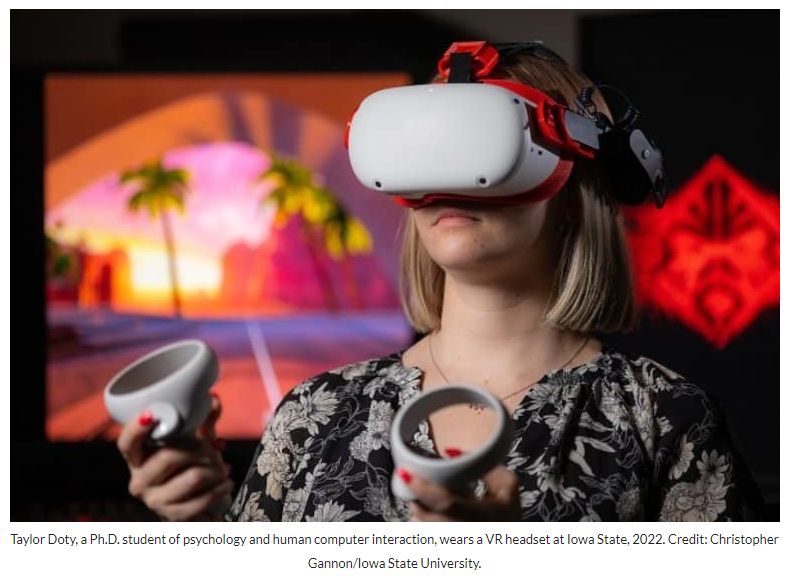How People Adapt to Cybersickness From Virtual Reality, by Rachel Cramer – Iowa State University
“While virtual reality has been around for decades, a combination of higher-resolution graphics, smoother tracking of the user’s movements and cheaper, sleeker headsets has propelled the immersive technology into arenas beyond gaming and military training.”
“In health care, VR has been used to prepare surgeons for complicated operations and help burn patients better manage their pain. In education, it’s opened doors for students to tour world famous museums, historical sites – even the human brain.”
“But Jonathan Kelly, a professor of psychology and human computer interaction at Iowa State University, says the biggest barrier to VR becoming mainstream is cybersickness. Previous studies show more than half of first-time headset users experience the phenomenon within 10 minutes of being exposed to VR.”
“Many of the symptoms – nausea, dizziness, headaches, eye fatigue, sweating and a lingering sense of movement – overlap with other forms of motion sickness. Kelly explained they’re all caused by conflicting sensory information.”
“‘When someone reads a book in a moving car, their eyes recognize a stationary environment while parts of the inner ear and brain that are involved in balance and spatial orientation pick up accelerations, turns and bumps,’ said Kelly.”
“In a virtual setting, the inverse is true. An individual’s visual system perceives the rush from a roller coaster ride while sitting on a coach. Even without the stomach drop or whiplash, the dissonance can make someone want to hurl.”

